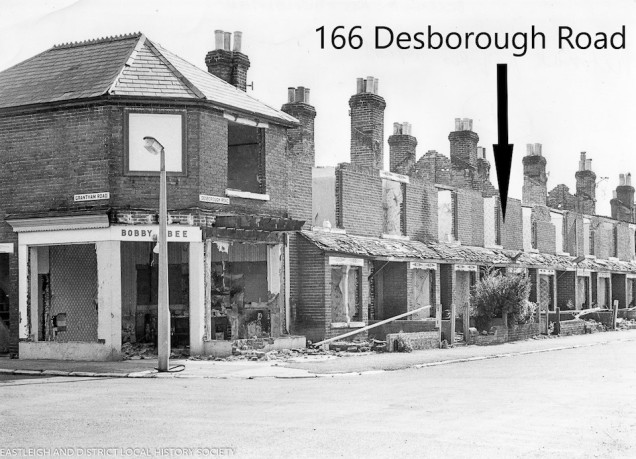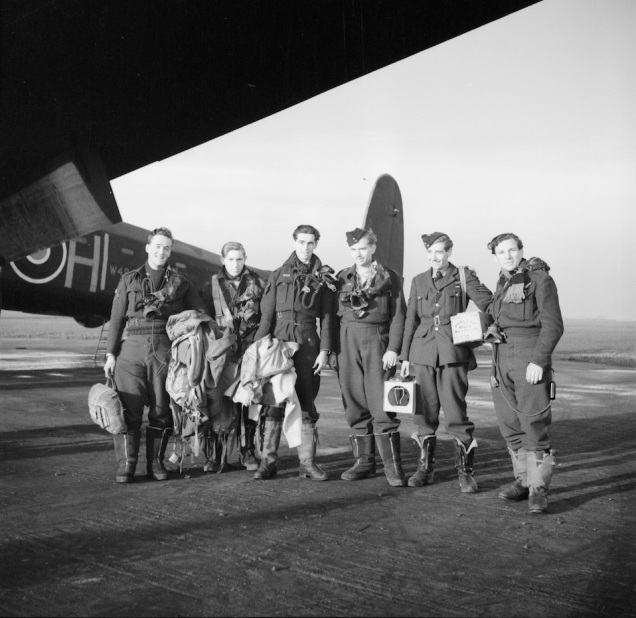

Pics: Eastleigh and District Local History Society
Lyndon Harper has kindly sent me two historic photos showing the house in Eastleigh in which William Long, front gunner in Lewis Burpee’s crew in AJ-S on the Dams Raid, was born. The house, now demolished, was at 166 Desborough Road, a long terrace of houses near the centre of the Hampshire town. William Charles Arthur Long was born here on 11 September 1923, the older of the two sons of William and Ethel Long. His father was described as a baker on his birth certificate.
By 1926 the family had moved to Bournemouth, to a house in Northcote Road, and it was while living there that their second son, Peter George Frank Long, was born in the Royal Victoria Hospital, Boscombe, on 2 February 1926. William Long Sr was described as a “baker and confectioner (assistant)” on Peter’s birth certificate.
Very little more is known about William Long, beyond the fact that his nickname was “Ginger”, which would suggest that he had red hair. He volunteered to join the RAF in October 1941, shortly after his 18th birthday, although he didn’t get posted to an Aircrew Reception Centre until April 1942. He was sent for air gunner training, and was then posted to 106 Squadron in September 1942.
Long flew on two operations, on 17 October with Sgt Lace on the Le Creusot raid and 8 December with Flg Off Healey to Turin, before joining Lewis Burpee on 20 December. He then flew on all the twenty-one further operations flown by Burpee in 106 Squadron, as well as a single trip to Berlin on 16 January with Flt Lt Wellington. He was therefore only five operations short of completing his first tour, after which he would have been due a well-earned rest, when he was killed on the Dams Raid on 17 May 1943, at the age of 19.
As an addendum to this information, Clive Smith has kindly sent me a recently digitised photograph from the IWM collection. It was obviously taken at the same time as a better known image which was released to the press in January 1943 as one of the “crews who bombed Berlin” and has therefore been widely reproduced. According to recent research in The Times archive, it was taken by William Field. Left to right are Gordon Brady, William Long, Guy Pegler and Lewis Burpee, all of whom flew on the Dams Raid. The two on the far right are Eddie Leavesley and George Goodings, who had both finished their tours before Burpee and the other three were transferred to 617 Squadron in March 1943.

Pic: IWM CH008483



 Further information about Guy Pegler and the other 132 men who flew on the Dams Raid can be found in my book
Further information about Guy Pegler and the other 132 men who flew on the Dams Raid can be found in my book 